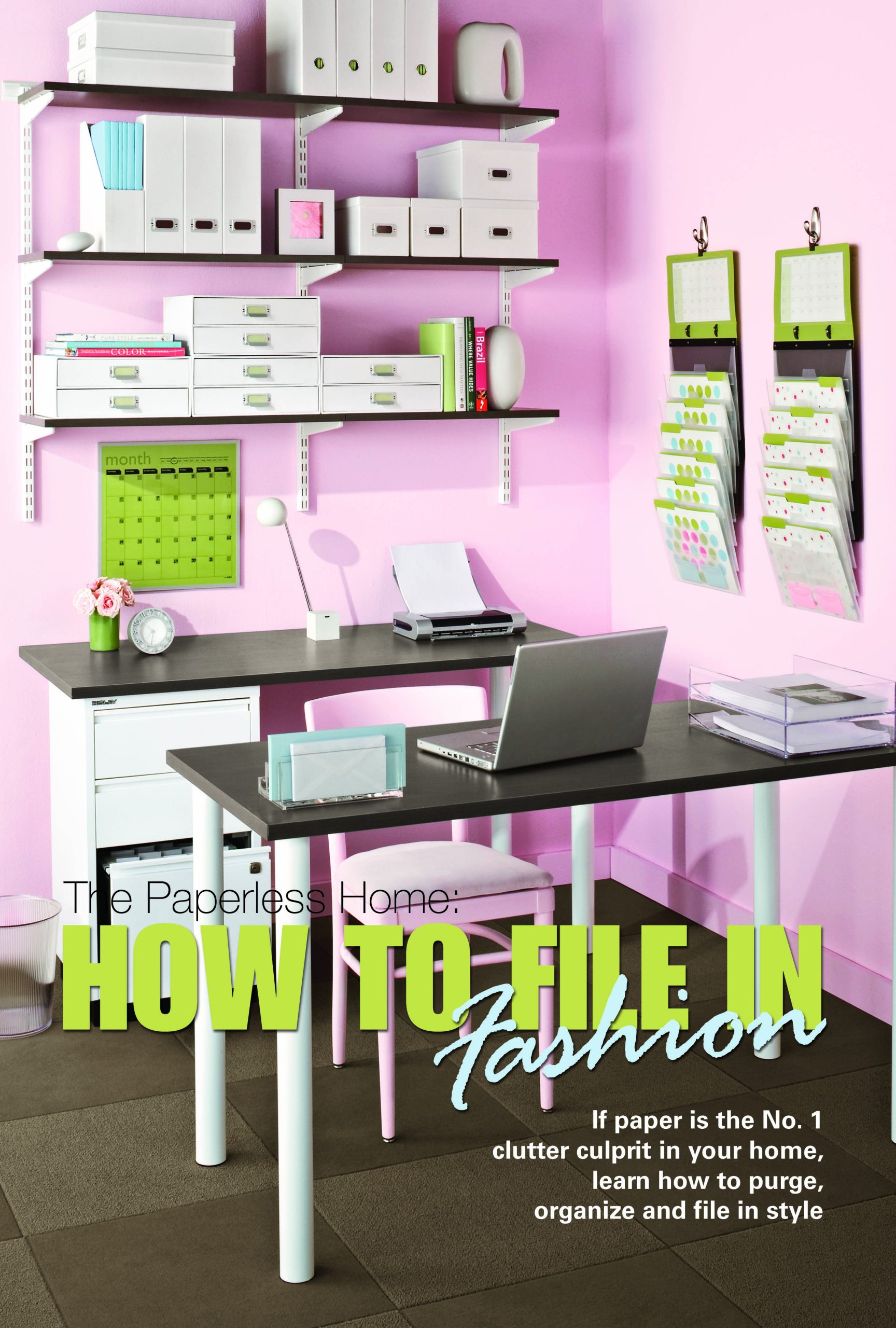If paper is the No. 1 clutter culprit in your home, learn how to purge, organize and file in style.
Since most homes now have a computer, and the majority of bills, magazines and personal documents are available online, many have wondered if a day will come when we live in a “paperless world.”
If the piles scattered about your dining room table, hall closet or kitchen counter are any indication, we’ve got a long way to go.
Experts say that even though people claim the mess of bills, coupons and unopened mail is “organized chaos,” it’s still chaos; and it’s doing more harm than good. A cluttered environment cuts productivity and greatly increases stress at the office and at home.
“Being organized saves time, money and piece of mind,” says professional organizer Erin J. Kelly, founder of Arranged By Erin, a Chicago-based home-and-office organization firm.
“These days, we’re pulled in so many directions – home, work, church, civic duties – there’s an extreme need to simplify a person’s process so he or she can be more effective every day,” says Kelly.
Sue Monson is the office manager of a charter aviation company in Van Nuys, Calif., and says that the whirlwind of activity in her life shows most in her dining room.
“That’s the place where mail or anything else brought into the house goes: on the dining room table. My husband never puts anything away, so it’s up to me.”
It’s those piles of mail that need to go first. Kelly says that working with clients on paper management is a huge part of her job.
“I don’t know if you can go 100-percent paperless, but you can definitely get to about 80 or 90 percent,” she says. For magazines, invest in stylish file folders for those you collect, and make sure to dispose of all others month-to-month.
Kelly says investing in a scanner is the best way to begin such a process. All those old bills, business cards, receipts and even greeting cards can be scanned into your computer and stored on a disc, mobile device or online database.
“Everyone has a different ‘tech level,’” says Kelly. “When I work with a client, we figure out how comfortable they are with various technology and go from there.” If you are comfortable with scanning documents, you can reduce the amount of paper in your home drastically as long as you save those files and label them with names you understand, and keep them in a sensible, easily located place, of course.
Kelly notes that even if a person isn’t ready to scan documents and e-mail files, they can still un-clutter that entryway end table if they’re willing to let go. She says people simply hold onto paper they don’t need. “Credit card receipts really can go after you pay your bill each month. Bank statements and utilities bills, too: These companies back up everything online now, and you can check that at any time.”
Kelly also suggests creating a “pending” file box for information you don’t know what to do with yet, or for documents that need to be verified, like a corrected credit card bill, or various applications and contracts. New designs, including paisley, stripes and floral prints, have removed the eyesore label from filing boxes, and help homeowners get more excited about organizing.
Sue Monson says that she’d love to hire a professional organizer someday to help her with her home paper problems. She insists that she wouldn’t need help with her office since “it’s pretty neat already, probably because my husband has nothing to do with it!”
© CTW Features
Published in Connections Magazine April 2020 Issue. Copyright 2020.


